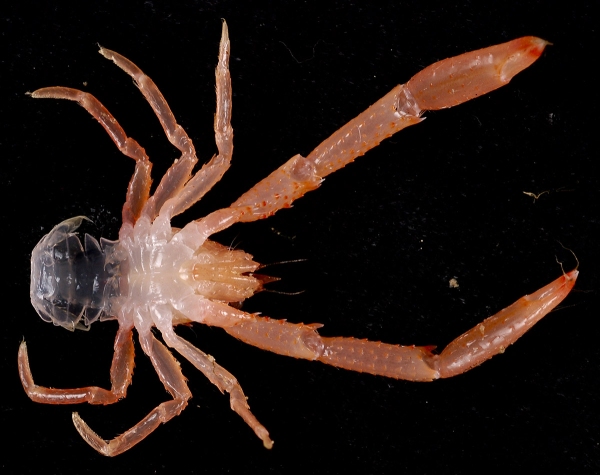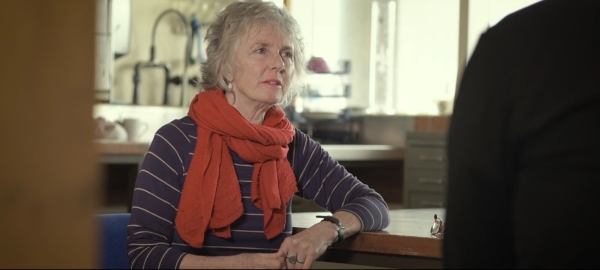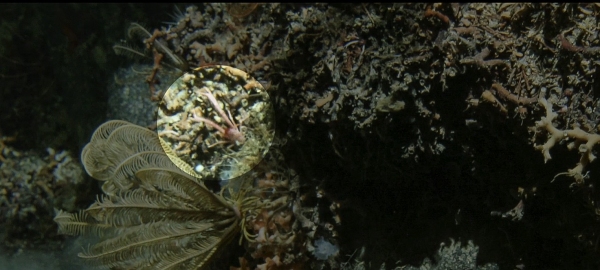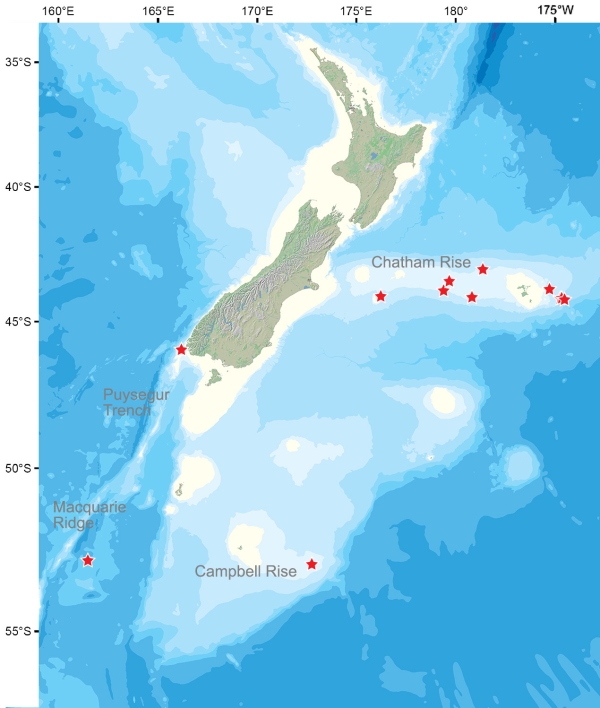Our Critter this week is Uroptychus tracey (Ahyong, Schnabel & Baba, 2015)—newly described in a 2015 paper reviewing the squat lobster fauna of the Macquarie Ridge.
If it looks like a lobster and tastes like a lobster...
These crustaceans are commonly known as "squat" lobsters because they look similar to true lobsters and are flattened in shape top and bottom. They're more closely related to hermit and mole crabs and tuck their tails under their thorax. The name Uroptychus stems from the greek for tail (uro) and fold (ptyx). Even though they don't carry a shell around with them, their carapace is soft and flexible allowing them to squeeze their bodies into small crevices and leave their lengthy sharp claws exposed to keep neighbouring lobsters away.
Squat lobsters are known for their lengthy eyelashes and come in many different sizes from the mighty Munidopsis aries (90mm carapace length) to some species which have bodies only a few millimetres long. Uroptychus tracey is typically only 7mm in length.
Few squat lobsters are seen in the shallows, but it's in the deepsea zones and continental slopes they really thrive. As well as forming dense aggregations on the sea floor they've even been found feeding around hydrothermal vents in deepwater trenches over 5000 metres.
More than 1000 species of squat lobsters are known worldwide with 56 from the New Zealand region. Collected from the Macquarie Ridge area far south of New Zealand, recently described Uroptychus tracy adds to only 15 squat lobster species worldwide known beyond 50°S.
See our other Critter of the Week on Munida gregaria squat lobsters.
What's in a name?
Di Tracey is a NIWA fisheries scientist and deepwater ecologist. Her new namesake Uroptychus tracey follows a time-honoured tradition in taxonomy: honouring a scientist for their contributions to science (or their friendship or support).
In the recently published description Uroptychus tracey is:
"Named in honour of our colleague Di Tracey for her contributions to New Zealand deepwater marine science and her instrumental role in collecting the Macquarie Ridge specimens."
Di’s research has spanned Southern Ocean locations rarely ventured to by others. Spending weeks at a time aboard the NIWA RV Tangaroa in some of the roughest oceans in the world, Di has extensively explored areas of ocean floor and collected a number of new-to-science species. Although armed with collecting devices such as sledges and beam trawl nets, Di gets excited seeing new deepwater species living in their natural environment using the RV Tangaroa's deep towed imaging system (DTIS) camera.
Squat lobsters are often spotted in DTIS video footage hanging out and feeding from their vantage points on coral clumps or black corals—another key marine group for Dr Tracey's recent research on the increasing effects of ocean acidification on stoney corals. See Di in action in the Exploring the Deepsea video:
Di has also starred in the New Zealand documentary On an Unknown Beach. This “speculative documentary on landscapes of ruin and the three explorers who dive deep into the abyss” (remotely, using DTIS on Tangaroa to document the impact of deepsea trawl fishing on the Chatham Rise) was directed by Adam Luxton and Summer Agnew.
Where can I see Uroptychus tracey?
Some of the specimens used in formally describing U. tracey were collected on the TAN0905 voyage on the Chatham Rise and the TAN0803 voyage centred around the Macquarie Ridge and the Hjort Seamount.
Known distribution of U. tracey from sampling sites in these two NIWA voyages.
Reference
Ahyong, Shane T., Schnabel, Kareen E. and Baba Keiji (2015). Southern high latitude squat lobsters: Galatheoidea and Chirostyloidea from Macquarie Ridge with description of a new species of Uroptychus. Records of the Australian Museum 67(4): 109–128.




